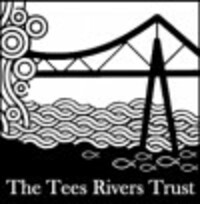Many thanks to The George Hotel for facilitating this camera's location and to The Tees Rivers Trust for capitally funding its installation.The River Tees originates on the eastern slope of Cross Fell in the Pennines, commencing its eastward course of approximately 85 miles until it reaches the North Sea, positioned between Hartlepool and Redcar. Encompassing a drainage area of 708 square miles, the river does not incorporate any significant tributaries. The head of the valley, known as Teesdale in its upper section, exudes a desolate grandeur, surrounded by hills that reach heights surpassing 2500 feet, along with vast expanses of bleak moorland. This particular region forms part of the North Pennine Area of Outstanding Natural Beauty, which has recently been designated a geological Europark, marking the first of its kind in the United Kingdom.The name Piercebridge derives from its Roman bridge, alternatively referred to as a brigg. In historical records, it was known as Persebrig in 1104 and Priestbrigg in 1577. The term "pierce" is believed to have originated from "pershe," meaning osiers, potentially alluding to the bridge's construction, which may have included osier twigs, as suggested in the earliest recorded mention of the name in 1050. Proposed alternative interpretations, such as relating to "priest" or the name "Piers," would be anachronistic for a place name of such antiquity.Since the Industrial Revolution, the River Tees has played a pivotal role in the transportation of industrial goods, most notably coal from the Durham Coalfields, as well as facilitating the growth of the steel industry centered around Middlesbrough. Initially, merchant ships departed from the River Tees after loading in Yarm and Stockton-on-Tees. However, as ships grew larger, these smaller docks were eventually superseded by larger and deeper docks in Middlesbrough and later Teesport, situated closer to the river's mouth. The emergence of the steel industry in the late 19th century earned the river the moniker "The Steel River" due to the numerous steelworks lining its banks. In the 20th century, the river's significance expanded to encompass the burgeoning chemical industry, with Imperial Chemical Industries (ICI) utilizing reclaimed land on the north bank for import/export facilities.The shift towards loading coal onto larger vessels in Middlesbrough served as the economic impetus not only for the development of the town itself but also for the construction of the railway connecting Stockton and Darlington. It was on this railway that George Stephenson developed his revolutionary locomotive, "Locomotion," marking it as the first steam railway to transport both passengers and industrial materials. The Stockton and Darlington Railway had its inception after an initial shareholders' meeting held in a room within a public house in Yarm.Presently owned by PD Ports, Teesport is situated in close proximity to the North Sea, approximately three miles east of Middlesbrough. Teesport stands as the third largest port in the United Kingdom and ranks among the top ten largest ports in Western Europe, handling over 56 million tonnes of domestic and international cargo annually. The majority of these goods remain affiliated with the steel and chemical industries, produced by companies that are members of the Northeast of England Process Industry Cluster (NEPIC). The areas where large-scale commodity chemical industry operations persist are Billingham and Seal Sands, located on the north bank of the River Tees, along with Wilton on the south bank. The Teesside Steelworks in Redcar operated until its closure in 2015.In addition to the aforementioned industries, the River Tees serves as a vital resource for companies involved in manufacturing and servicing the North Sea oil and gas sector, as well as the renewable energy industry, including offshore wind turbines. Adjacent to the mouth of the River Tees, the south bank is home to the Teesside Offshore Wind Farm, generating 62 megawatts of power and constructed between 2011 and 2013.
Near the river's estuary, an expansive dry dock facility operated by ABLE UK, known as TERRC (Teesside Environmental Reclamation and Recycling Centre), is utilized for the dismantling of oil rigs and other large vessels. Furthermore, Hartlepool Nuclear Power Station is situated adjacent to the east of the River Tees.






